Exploring the Benefits of Remote Patient Monitoring


Intro
Remote Patient Monitoring (RPM) is a groundbreaking transformation in healthcare. It allows doctors to observe vital health data of patients from afar, outside traditional hospital settings. This offers a range of benefits that enhances patient care. By enabling real-time tracking of health metrics, RPM helps in managing chronic diseases more effectively, increasing patient engagement, and optimizing healthcare resources. This article will delve into the multifaceted benefits of RPM, highlighting the essential role it plays in modern healthcare delivery.
Software Category Overview
Definition and Importance
At its core, RPM encompasses any technology that allows for the collection of health-related data from individuals either remotely or in real-time. These technologies often incorporate devices like blood pressure monitors, glucose meters, and wearable fitness trackers. The importance of RPM lies in its ability to lower hospitalization rates and improve overall health outcomes. As patients increasingly expect convenience and flexibility in managing their health, RPM provides an intuitive solution that aligns with these needs.
Key Characteristics
RPM systems share several characteristics that enhance their effectiveness:
- Real-Time Data Collection: Continuous monitoring supports proactive decision-making.
- Patient Engagement: Tools that inform and educate patients can lead to higher satisfaction.
- Data Integration: Effective RPM systems integrate seamlessly with existing healthcare infrastructure like Electronic Health Records (EHRs).
- Security Standards: Ensuring patient data is protected against breaches is paramount.
- User-Friendly Interfaces: Simplistic designs minimize technical barriers, encouraging high adoption rates among patients.
"RPM enables healthcare to shift from reactive to proactive, transforming the patient experience."
Comparative Analysis of Top Software Options
Feature Comparison
When considering RPM solutions, it is essential to analyze their features. Look for software that includes:
- Data Analytics: Tools for analyzing patient data to identify trends.
- Alerts and Notifications: Automated alerts for healthcare providers based on patient conditions.
- Telehealth Capabilities: Offering virtual consultations to enhance patient interaction.
- Customization Options: Allowing healthcare providers to tailor the software to fit their specific needs.
Pricing Models
Pricing for RPM solutions varies. Some common models include:
- Subscription-Based: Monthly or annual fees that cover the software and support.
- Pay-Per-User: Costs increase based on the number of active users.
- One-Time Purchase: Requires upfront investment, but may have lower long-term costs.
Evaluating these models in relation to your budget and organizational needs is crucial for selecting the right RPM software.
With an understanding of RPM and its software options, we can explore the extensive benefits this approach offers to patients and healthcare providers alike.
Foreword to Remote Patient Monitoring
Remote patient monitoring (RPM) has emerged as a crucial innovation in the healthcare sector. This approach facilitates continuous observation of patients' health metrics outside traditional medical settings. The importance of RPM cannot be overstated, especially considering recent challenges in healthcare delivery and access. It aims to empower patients, enhance the quality of care, and streamline resource utilization.
The significance of RPM lies in its ability to improve healthcare outcomes through a more proactive monitoring approach. By utilizing technology, healthcare providers can track patients in real time, identifying potential issues before they escalate into more serious health concerns. This capability not only leads to timely interventions but also promotes a collaborative approach between patients and providers.
In addition, RPM reduces the need for hospital visits. This is particularly useful for patients with chronic conditions who often require frequent monitoring. They can share their data from the comfort of their homes, which ultimately saves time and minimizes the stress associated with traditional medical visits.
Moreover, RPM enhances patient engagement. When patients can see and understand their health data, they become more involved in their care. This engagement leads to better adherence to treatment plans and can result in improved health outcomes.
The benefits extend to healthcare professionals as well. With access to accurate and timely data, providers can make informed decisions regarding patient care. The integration of RPM into everyday practice can mitigate the burden on healthcare systems, allowing providers to allocate resources more effectively.
"Remote patient monitoring represents a key evolution in how care is provided, combining technology with human insight to foster better health outcomes."
In summary, RPM is not just a trend; it is a transformative element defining the future of healthcare. The next sections will delve deeper into the various perks offered by RPM, presenting a compelling case for its broader implementation in both clinical and home care settings.
Defining Remote Patient Monitoring
Remote Patient Monitoring (RPM) signifies a pivotal evolution in the healthcare industry. It refers to the systematic process of collecting health-related data from patients in a non-clinical setting, and conveying that information to healthcare providers for assessment and intervention. This practice is increasingly vital, driven by the growing demand for accessible, efficient, and personalized healthcare solutions.
The essence of RPM lies in its ability to maintain real-time oversight of patient conditions. This direct observation facilitates timely interventions and assists healthcare professionals in making informed decisions. As healthcare continues to evolve, defining RPM becomes crucial for understanding its magnitude in transforming patient care.
The Importance of RPM Definition
Understanding RPM involves clarifying several core elements:
- Remote Monitoring Technologies: These comprise mobile health applications, wearable devices, and IoT-enabled gadgets that continuously track vital signs such as heart rate, blood glucose levels, and blood pressure. The data collected from these devices is essential for anticipating health fluctuations.
- Patient-Centric Approach: RPM emphasizes patient involvement, fostering autonomy in self-monitoring practices. This engenders a collaborative relationship between the patient and healthcare providers, encouraging adherence to treatment regimens and lifestyle modifications.
- Integration with Healthcare Systems: For RPM to be effective, data must seamlessly integrate into existing healthcare infrastructures such as Electronic Health Records (EHR). This ensures that healthcare professionals have a comprehensive view of a patient’s health history, enabling more precise decision-making.
By defining RPM in this manner, we can recognize its inherent benefits, such as enhanced patient engagement and improved management of chronic diseases. RPM effectively tailors healthcare to individual needs, proving advantageous for both patients and providers.
"RPM integrates patient monitoring into daily life, reducing barriers to efficient healthcare delivery."
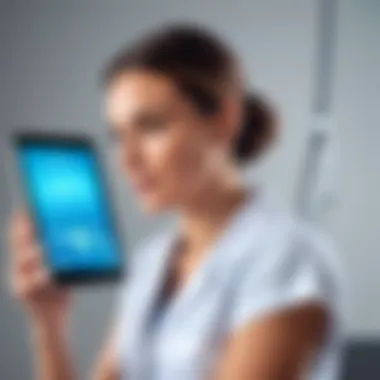
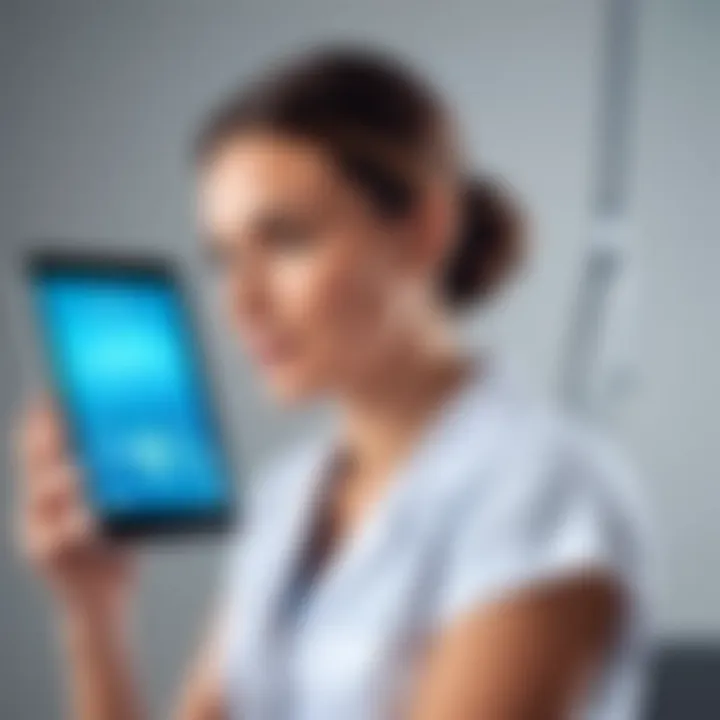
As healthcare decision-makers and IT professionals delve into RPM, a deep understanding of its definition unlocks a broader appreciation for its potential implications. Knowing what RPM entails is a stepping stone toward leveraging its capabilities in managing patient care more proficiently.
Historical Context of RPM
Remote patient monitoring has evolved significantly over the past few decades, driven by advancements in technology and a changing healthcare landscape. Understanding this historical context is crucial for appreciating its current applications and potential impact on patient care. The roots of RPM can be traced back to early telemedicine practices, though initial attempts were rudimentary and limited to specific conditions.
In the late 20th century, the integration of telecommunications with medical devices began to gain traction. Pioneering efforts enabled healthcare professionals to monitor vital signs remotely for patients suffering from chronic illnesses. This period marked the beginning of a shift where healthcare moved increasingly outside of hospital settings. The demand for patient-centered care led to greater emphasis on home health monitoring, encouraging the development of various devices.
A pivotal moment in the history of RPM was the advent of the internet and mobile technology in the 1990s and 2000s. With these emerging technologies, the transmission of data became faster and more reliable. Patients could now connect with healthcare providers without the need for frequent in-person visits. The introduction of wearable technologies, such as heart rate monitors and glucose sensors, further facilitated this transformation.
"Remote patient monitoring serves as a bridge between patients and their healthcare providers, significantly enhancing the ability to manage health remotely."
By the end of the 2000s, notable advancements in health informatics and data analysis paved the way for sophisticated applications of RPM. Companies began to innovate wearable devices capable of tracking a wide range of health metrics. This led to an increased confidence from both patients and clinicians in the effectiveness of remote monitoring.
The COVID-19 pandemic further accelerated the adoption of RPM. Social distancing measures prompted healthcare systems to explore alternative methods to provide care without compromising patient safety. During this time, remote patient monitoring became essential for managing patients with chronic illnesses and monitoring patients recovering from COVID-19.
In summary, the historical development of remote patient monitoring showcases the evolution from basic telemedicine solutions to a complex ecosystem of tools and technologies that empower both patients and healthcare providers. This background not only highlights the benefits of RPM that we explore in this article but also emphasizes how vital RPM has become in shaping modern healthcare delivery.
As RPM continues to grow, it is essential to reflect on its history. Awareness of its past informs us about the future possibilities within this dynamic field.
Remote patient monitoring (RPM) offers numerous advantages in the landscape of modern healthcare. These benefits extend beyond just technological advancements; they fundamentally improve patient care, engagement, and outcomes. This section will delve into the core benefits, emphasizing their significance and how they contribute to a more efficient and effective healthcare system.
Enhanced Patient Engagement
One of the most prominent benefits of RPM is enhanced patient engagement. Patients who actively monitor their health are more likely to participate in their care plans. Tools such as wearable devices and patient portals facilitate continuous communication between patients and healthcare providers. This connection fosters a sense of partnership and accountability. When patients receive real-time feedback about their health metrics, they are encouraged to make informed lifestyle choices. As a result, this active involvement can lead to improved adherence to medication regimens, dietary adjustments, and regular exercise.
Improved Chronic Disease Management
Chronic diseases account for a significant proportion of healthcare costs. RPM allows for timely interventions that can mitigate complications. Continuous monitoring of vital signs such as blood pressure, glucose levels, and heart rate aids in identifying fluctuations early. Healthcare providers can respond swiftly, adjusting treatment plans according to the real-time data. This real-time management results in fewer hospital visits and reduced healthcare expenses, providing a win-win for both patients and providers.
Increased Data Accuracy and Reliability
The use of sophisticated monitoring devices improves the accuracy and reliability of patient data. Traditional methods of collecting health information are prone to human error and irregularity. RPM automates data collection, ensuring consistency and precision. For example, patients can use devices like blood sugar monitors or wearable heart rate trackers to report information directly to their healthcare provider's systems. This leads to better-informed decisions, ultimately enhancing the quality of care.
Cost-Effectiveness in Care Delivery
Implementing RPM can be a cost-effective approach for healthcare systems. By reducing the frequency of face-to-face consultations, healthcare providers can cut down on operational costs. Moreover, RPM reduces the need for hospital admissions and emergency visits, leading to substantial savings. Patients, too, experience lower costs by avoiding unnecessary travel and time off work. In essence, RPM contributes to more sustainable healthcare systems, where resources can be allocated more effectively.
Optimizing Healthcare Resources
RPM enables healthcare systems to optimize their resources better. With remote monitoring, healthcare providers can manage a larger patient population without compromising care quality. Staff can prioritize their time and focus on patients who require direct interaction. This efficiency extends beyond human resources; it includes reducing the overhead associated with physical patient visits. By reallocating resources strategically, healthcare organizations can achieve better health outcomes with less strain on their facilities.
Technology's Role in RPM
The implementation of technology in remote patient monitoring (RPM) has redefined the landscape of healthcare. It enhances the capacity to track patient health and well-being continuously, rather than relying solely on periodic clinical visits. This differentiation introduces multiple advantages:
- Real-Time Data Access: Technology enables healthcare providers to access and analyze data in real-time, increasing responsiveness to patient needs.
- Patient Empowerment: Devices and apps provide patients with the information about their health status, promoting engagement in self-management.
- Cost Efficiency: Automation through technology can streamline operations and reduce labor costs, leading to enhanced service delivery.
Understanding the role of technology helps stakeholders recognize its potential and approach RPM with informed expectations.
Innovative Monitoring Devices
Innovative monitoring devices are at the core of remote patient monitoring. These instruments offer various functionalities that cater to diverse health needs. Technologies such as wearable sensors, mobile applications, and biomedical devices collect necessary metrics like heart rate, glucose levels, and activity tracking.
Such devices ensure continuous monitoring, enabling timely interventions before complications arise. For example, devices like the Apple Watch have surpassed merely being fitness trackers; they now provide essential health insights, including heart rhythm irregularities. On the other hand, glucometers connected to smartphone apps allow diabetic patients to track their blood sugar levels and report them directly to their healthcare teams.
Moreover, these devices often integrate with databases that enhance data accuracy, providing real-time insights for more informed treatment decisions.
Software Integration for Data Analysis
Software plays a pivotal role in translating raw data from monitoring devices into meaningful information. With the influx of health data generated, the need for sophisticated software solutions becomes critical.
Effective software integration facilitates data analytics, allowing healthcare providers to identify trends and patterns in patient health. For instance, tools like Epic or Cerner enable healthcare professionals to monitor patient progress, adjusting treatment plans based on analytics.
Additionally, artificial intelligence and machine learning systems can enhance this analysis by predicting future health complications. This proactive approach not only aids in improving patient outcomes but also serves as a basis for preventative care strategies.
"The integration of technology in RPM is not just about data collection; it is fundamentally about enhancing patient care delivery."
Impact on Patient Outcomes
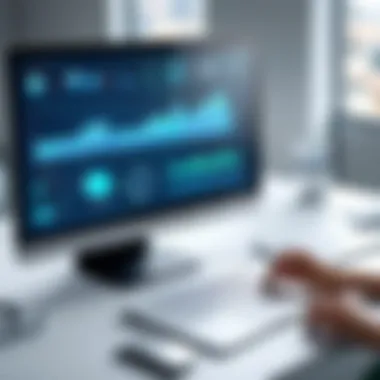
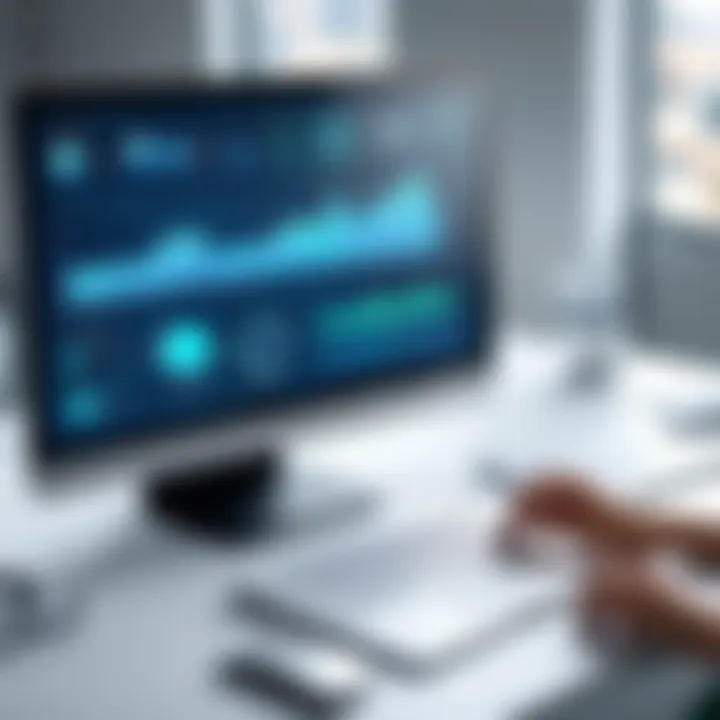
The role of remote patient monitoring (RPM) in healthcare cannot be overstated when it comes to patient outcomes. RPM facilitates continual observation of health metrics. This allows for timely interventions, reducing the likelihood of complications that often lead to hospital re-admittance. With real-time data gathering, healthcare providers can make informed decisions based on accurate, immediate information. This section will explore two critical components of how RPM impacts patient outcomes: reducing hospital readmissions and promoting proactive health management.
Reducing Hospital Readmissions
Hospital readmissions are often a sign of inadequate management of patient care. They carry significant costs—not only financially, but for the individual’s health and emotional well-being as well. Remote patient monitoring addresses this issue by allowing healthcare providers to closely track patient progress after discharge. For example, common chronic conditions such as heart failure or diabetes can benefit immensely from continuous monitoring. By using devices like blood glucose monitors or heart rate trackers, healthcare teams can quickly identify any deviations from expected health metrics.
"Studies indicate that RPM can reduce hospital readmissions by up to 20%, highlighting its vital role in patient care."
By recognizing potential issues early, healthcare providers can intervene before a small problem escalates into a medical crisis. Furthermore, RPM allows for the development of personalized care plans based on real-time data. This ongoing adjustment of plans helps ensure that patients receive the most effective treatment, decreasing the risk of readmissions.
Promoting Proactive Health Management
Proactive health management is about anticipating health problems before they occur. RPM plays a key role in shifting healthcare from a reactive to a proactive model. By continuously collecting data from patients, healthcare systems can identify patterns that may signify an impending health issue. This applies to a variety of health conditions, where trends in the data can alert providers of an emerging problem.
Utilizing software to analyze health trends enables practitioners to take preventive actions. Patients become active participants in their health journeys. For instance, an RPM system could remind a patient to adhere to their medication schedule or prompt them to attend follow-up appointments. This ongoing engagement fosters accountability and supports adherence to treatment protocols, all leading to better health outcomes.
Moreover, through improved communication facilitated by RPM, patients gain access to their health data. This transparency aligns them closer to their healthcare teams, allowing for shared responsibility in managing their condition. As patients see their progress or setbacks, they may be more motivated to adhere to treatment plans.
Challenges in Implementing RPM
Implementing Remote Patient Monitoring (RPM) solutions does not come without its hurdles. This topic holds significant importance as it sheds light on the various obstacles that healthcare providers face when integrating RPM systems. Each challenge impacts the overall effectiveness of RPM, potentially influencing both patient outcomes and operational efficiency. Understanding these challenges is essential for stakeholders aiming to optimize the benefits of RPM.
Technical Barriers
In terms of technical barriers, one of the most pressing issues is the interoperability between different systems. Many healthcare organizations utilize disparate electronic health record systems, which can hinder seamless data exchange. This fragmentation leads to difficulties in aggregating patient data, thereby affecting the overall analysis and efficacy of RPM tools.
- Inadequate infrastructure can also pose a significant challenge. For instance, healthcare locations may lack the necessary bandwidth to support real-time data transmission, particularly in rural areas.
- Additionally, there is often a steep learning curve associated with new technology. Staff and patients alike must adapt to using new devices and applications, which can slow down the implementation process.
Regulatory and Compliance Issues
Regulatory complexity is another formidable challenge faced in the realm of RPM. With laws and guidelines continually evolving, healthcare providers must stay abreast of compliance requirements set forth by organizations such as the Centers for Medicare & Medicaid Services (CMS) and the Health Insurance Portability and Accountability Act (HIPAA).
- Maintaining patient data security is a top priority, and any lapse can result in substantial penalties.
- Moreover, reimbursement models for RPM services are still in flux. Ensuring that the services provided are adequately compensated can be a major concern for healthcare organizations.
Patient Acceptance and Adoption Rates
Patient acceptance of RPM technologies can significantly influence their success. A lack of familiarity with technology can deter patients from engaging with these systems, especially among older demographics.
- Many patients may feel uneasy about monitoring their health from home. Concerns about data privacy and the overall effectiveness of RPM are common.
- Education plays a critical role in facilitating patient adoption. Without proper guidance and support, patients may struggle to understand how RPM can improve their care experience. This reluctance can slow down the wider acceptance of RPM solutions across various health conditions.
Effective communication and education strategies are vital for overcoming these challenges. Providers must engage with patients to illustrate the value of RPM in managing their health, thereby increasing acceptance rates.
In summary, while RPM offers many advantages, its successful implementation is riddled with challenges that must be systematically addressed. From technical and regulatory barriers to acceptance issues among patients, understanding these factors is essential for advancing the effectiveness of remote monitoring in healthcare.
Future of Remote Patient Monitoring
The future of Remote Patient Monitoring (RPM) presents significant opportunities for enhancing healthcare systems. As health technology evolves, RPM will become integral to patient care strategies. The growing adoption of RPM systems can lead to better patient experiences and outcomes. Additionally, the financial implications for healthcare providers and patients merit careful consideration.
One important aspect of RPM’s future is its ability to facilitate timely healthcare interventions. By collecting real-time health data, providers can identify potential issues before they escalate. This proactive approach not only improves health outcomes but also reduces the resources spent on emergency care.
Incorporating artificial intelligence into RPM tools can further enhance their effectiveness. Algorithms can analyze health data in real time, enabling tailored interventions for each patient. The use of predictive analytics can support healthcare professionals in acting swiftly when data suggest deteriorating health.
Another crucial factor is the expanding role of patient engagement. As patients become more involved in their health monitoring, they are likely to take more ownership of their care. This can lead to improved adherence to treatment plans, resulting in better long-term health outcomes.
Emerging Trends and Innovations
Emerging trends and innovations in RPM are reshaping the future of healthcare. One such trend is the increasing use of wearable devices. Technologies like smartwatches and dedicated health monitors allow patients to track vital signs continuously. These devices often sync with apps that deliver insights directly to healthcare professionals.
Additionally, the integration of telemedicine with RPM is gaining traction. Patients can consult healthcare providers remotely, thus reducing the need for in-person visits. This combination creates a more efficient healthcare delivery system.
Moreover, developments in data security are becoming essential as RPM systems handle sensitive information. Innovations in encryption and data management will ensure the safety of patient data while fostering trust in these technologies.
The growth of home health technologies represents another profound trend. At-home monitoring creates a comfortable environment for patients, enhancing their overall experience. This could lead to higher satisfaction rates and ultimately better adherence to care protocols.
Integration with Telehealth Services
Integration with telehealth services offers a seamless way to enhance patient care through RPM. As organizations blend these technologies, they create a unified experience for patients. This ensures that data collected remotely can be effectively utilized in telehealth consultations.
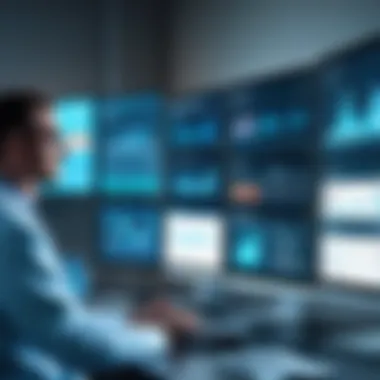

Telehealth services can utilize RPM data to inform treatment decisions. With patient data readily available, healthcare providers can have informed discussions with patients about their health status. This real-time data access can lead to quicker decision-making and a more collaborative approach to care.
Implementing integrated systems will also offer operational efficiencies. For example, healthcare staff can monitor several patients simultaneously through a single platform. This becomes increasingly vital as the demand for remote services grows across populations.
Furthermore, patient education plays a significant role in this integration. By offering resources alongside RPM and telehealth, providers can help patients understand their conditions better. An informed patient is more likely to engage in their care actively and follow through with recommended actions.
Overall, the future of RPM, through its integration with telehealth services and emerging technologies, will revolutionize how healthcare is delivered, making it more efficient, accessible, and patient-centered.
Comparative Analysis of RPM Models
In the evolving landscape of healthcare, understanding the distinct models of Remote Patient Monitoring (RPM) is crucial. This comparative analysis serves to clarify the strengths and weaknesses of various RPM approaches, enabling stakeholders to make informed decisions. The right RPM model can enhance patient care, streamline workflows, and improve overall health outcomes.
Choosing between different RPM models requires careful consideration of various factors. Key considerations include cost, patient engagement potential, data accuracy, and the ability to deliver timely interventions. As healthcare systems strive to achieve efficiency and effectiveness, a meticulous analysis of these models becomes indispensable.
Home-Based Monitoring vs. Clinical Monitoring
Home-based monitoring and clinical monitoring represent two prevailing models in the RPM landscape. Home-based monitoring allows patients to collect health data in their natural environments. Devices like wearable heart rate monitors or home blood pressure cuffs facilitate continuous tracking of key metrics. This model emphasizes patient autonomy and can lead to higher engagement.
Conversely, clinical monitoring is predominantly conducted in healthcare facilities, employing more sophisticated technologies that can provide comprehensive health assessments. This model allows healthcare professionals to analyze data with advanced capabilities. However, it often requires patients to visit clinics, which can be burdensome.
Key Differences Include:
- Patient Convenience: Home-based systems promote comfort and ease for patients, reducing the need for frequent clinic visits.
- Data Collection: Home monitoring enables real-time data collection, while clinical settings can yield more detailed analysis through specialized equipment.
- Engagement Levels: Home settings can boost patient involvement in their healthcare, possibly enhancing outcomes.
- Cost Implications: Home-based systems tend to reduce costs related to hospital visits and procedures.
Technology-Driven Models vs. Traditional Approaches
Technological advancements have reshaped RPM models. Technology-driven models harness modern tools such as artificial intelligence and cloud computing. These systems can process vast amounts of data in real-time, allowing for predictive analytics and timely alerts. Additionally, these models often integrate seamlessly with telehealth services.
On the other hand, traditional approaches often rely on conventional equipment and clinical visits. These methods may lack the sophistication and speed that technology-driven models provide. Traditional models involve more manual data entry and may operate with delays that hinder prompt decision-making.
Considerations on Both Approaches:
- Efficiency: Technology-driven RPM typically results in enhanced efficiency by reducing paperwork and administrative tasks.
- Accuracy: Advanced analytics improve accuracy in interpreting health metrics.
- Accessibility: Technological tools can expand access to healthcare services, especially in remote areas.
- Training Needs: Transitioning to technology-driven models necessitates training for both clinicians and patients to maximize effectiveness.
Understanding these diverse RPM models enables healthcare professionals and decision-makers to align their strategies with their organizational goals, ultimately enhancing patient care.
Evaluating these models allows for better-informed decisions regarding the deployment of RPM systems. By weighing the pros and cons of home-based versus clinical monitoring and comparing technology-driven with traditional approaches, stakeholders can choose the most appropriate RPM model for their specific needs.
Economic Considerations of RPM
Remote Patient Monitoring (RPM) brings a significant economic impact in healthcare settings. It is crucial not only for enhancing patient care but also for addressing economic efficiency across the board. Understanding these economic considerations is vital for decision-makers, IT professionals, and entrepreneurs aiming to leverage RPM technologies.
The integration of RPM into healthcare systems dramatically affects the financial landscape by decreasing costs associated with traditional healthcare delivery methods. It promotes accessibility while optimizing resource allocation. Examining RPM through an economic lens allows stakeholders to make informed decisions that can lead to better health outcomes and financial sustainability.
Cost Savings for Providers and Patients
RPM systems present substantial cost savings for both healthcare providers and patients. For providers, the reduction in hospital readmissions can lead to significantly lower operational costs. Patients, on the other hand, can benefit from reduced travel expenses and time associated with in-person visits.
- Reduced Emergency Visits: By monitoring chronic conditions proactively, RPM can prevent emergency situations and the costs associated with them.
- Decreased Length of Hospital Stays: With ongoing monitoring, early interventions are possible, which may shorten the time spent in healthcare facilities.
- Lower Operational Costs: Providers utilizing RPM can streamline processes, leading to a more efficient allocation of staff and resources.
Patients experience more direct financial benefits as well. The ability to manage their health from home decreases the need for frequent doctor visits, saving them on transportation and missed work opportunities.
"Investing in Remote Patient Monitoring can lead to substantial savings and greater patient satisfaction."
Long-term Financial Implications
The long-term financial implications of RPM adoption reflect a shift in how healthcare is delivered and accessed. The initial investment in technology might seem substantial; however, the long-term savings can outweigh these costs.
- Investment in Technology: The upfront costs for RPM devices and systems can be high. Still, with advancements and increased competition, prices are likely to decrease.
- Return on Investment (ROI): Over time, as patient health improves and emergency interventions decrease, the ROI for RPM can become favorable for healthcare institutions.
- Shifts in Reimbursement Models: With the growing trend towards value-based care, RPM aligns well with new reimbursement models that focus on patient outcomes rather than volume of services. This alignment can translate into financial incentives for healthcare providers.
In summary, the economic considerations of Remote Patient Monitoring are not merely about immediate savings but also encompass a broader view of healthcare efficiency, patient satisfaction, and sustainable financial practices. Stakeholders must recognize and evaluate these dynamics to enhance both care delivery and operational performance.
Ending
The conclusion serves as a pivotal segment in understanding the comprehensive scope of remote patient monitoring (RPM) and its profound impact. This article has meticulously highlighted the numerous advantages of RPM, including enhancing patient engagement, optimizing healthcare delivery, and ultimately improving patient outcomes. As we reflect on these benefits, it's crucial to underscore the interconnectedness of these elements that together create a robust system for managing patient health.
Key takeaways from this exploration include:
- Enhanced patient engagement is critical; RPM encourages patients to take an active role in their health, leading to better adherence to treatment protocols.
- The focus on improved chronic disease management allows for early interventions, reducing complications and enhancing quality of life for patients with long-term conditions.
- Increased data accuracy and reliability ensures that healthcare providers make well-informed decisions, shaping tailored treatment plans based on real-time metrics.
- Cost-effectiveness recalibrates the economics of healthcare, providing significant savings for both providers and patients while improving care accessibility.
- The capability to optimize healthcare resources allows for better allocation and usage, maximizing the potential of healthcare systems in a cost-driven environment.
In summary, RPM stands as a transformative force reshaping healthcare delivery. The implications of these benefits extend beyond immediate patient care into broader systemic improvements within the healthcare landscape. As decision-makers, IT professionals, and entrepreneurs examine the future of healthcare, recognizing the role of RPM will be paramount in driving innovation and effectiveness in patient management.
"Remote patient monitoring not only enhances the quality of care but also redefines the patient-provider relationship, fostering a new level of collaboration that benefits all parties involved."
The importance of concluding remarks cannot be understated. They synthesize the critical elements discussed and encourage stakeholders to embrace RPM not just as an alternative method, but as an essential component of contemporary healthcare. Evaluating RPM's long-term effects will require an ongoing commitment to adaptation and integration into existing frameworks. As healthcare continues to evolve, so too must our strategies for delivering care that are thoughtful, inclusive, and attuned to the needs of both providers and patients.







